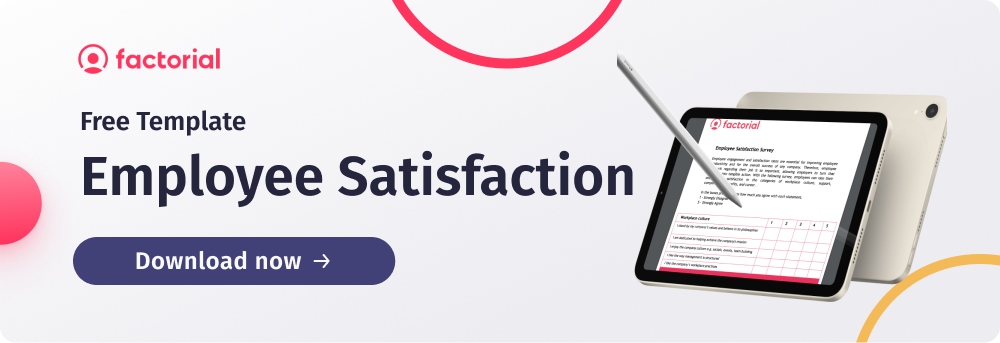The Great Resignation has been a major buzzword in the UK over the last couple of years. It signifies the trend of workers leaving their jobs to seek improved working conditions, and it has sparked a new phenomenon: Quiet Quitting.
Essentially, this refers to employees quitting in spirit before actually quitting in reality. Quiet quitters don’t work beyond their basic duties and become less committed and engaged with their work. They might continue to fulfill their primary responsibilities but be less willing to engage in team-building activities and increasingly resistant to new projects and challenges.
But this is not only happening in the UK. The phenomenon is impacting work teams across the globe. According to Gallup, 87% of the worldwide workforce are either not engaged or actively disengaged.
This presents new challenges for HR managers. Building company culture and nurturing talent will only become more difficult as employees emotionally dissociate from work.
HR teams must understand the root of the issue in order to combat it. This guide will cover just that, as well as actionable strategies to engage and retain talent.
- What is Quiet Quitting?
- The Origins of Quiet Quitting
- How Companies are Responding to Quiet Quitting
- Employee Retention Strategies to Engage Your Workforce
What is Quiet Quitting?
The term ‘Quiet Quitting’ is a concept that’s been gaining traction rapidly in the UK.
It is the idea of going to work but only doing the bare minimum to avoid being fired. Employees are physically present but mentally and emotionally disengaged.
When employees disassociate, It can have a massive impact on the success of a company. Factors that give organisations a critical competitive advantage, such as creativity and determination, diminish as a result.
So what can companies do to better understand – and inhibit – the problem?
The Origins of Quiet Quitting
What we know today as Quiet Quitting is intertwined with The Great Resignation. Both are rooted in the UK workforce becoming increasingly frustrated with being overworked and underappreciated through pay and recognition.
The idea started in the United States where employees took to social media to admit they were giving their bare minimum at work, covering their core obligations and not much else. It has since gained international traction on social media as more and more Gen Z workers speak out about feeling undervalued. Today, one in three UK workers label themselves as quiet quitters, showing up to work to do no more than what’s required to get by.
The pandemic has a big part to play in this. Having life put into perspective and new hybrid ways of working tried and tested, an even work-life balance has become more of a priority for workers. However, there are several underlying factors that are also to blame, including lack of employee recognition and inadequate compensation whilst cost of living soars.
The picture may look grim, but there are many tangible ways that HR teams can address the origins of the problem and boost team morale. Continue reading to discover three research-backed strategies to prevent Quiet Quitting from getting a grip on your workforce.

How Companies are Responding to Quiet Quitting
Many large companies are implementing strategies to address and avoid Quiet Quitting. SMEs can take inspiration from these case studies and adapt their strategies to suit smaller businesses.
Google has implemented a “20% time” policy which allows employees to spend 20% of their work-week on projects outside of their regular responsibilities. This has been a successful way to keep teams motivated, while also allowing them to pursue personal interests and build relationships at work.
Another example comes from Patagonia, a company best known for its commitment to environmental and social responsibility. They have introduced a policy that encourages employees to spend time on environmental and community projects during work hours. According to Yvon Chouinard, founder of Patagonia, the best thing a business can do for the planet is to make good products and take care of its employees.
To retain talent, companies are also investing in employee development and career advancement opportunities. For example, Deloitte has created a ‘Leadership Academy’ that offers leadership training and career support for employees interested in progressing and growing.
Many companies are responding to the trend by shifting towards flexible contracts. Remote work, hybrid contracts, no monitoring and flexible hours are some of the most popular types. By providing increased autonomy, teams can more easily balance their work and personal responsibilities, decreasing the chance of quiet quitting.
But case studies can only get you so far. You’ll need to evaluate the specific causes of Quiet Quitting at your workplace and build an employee retention strategy based on these. Try starting with the tips below.
Employee Retention Strategies to Engage Your Workforce
The first step in managing Quiet Quitting within your team is to identify the main cause of the problem. You can conduct engagement surveys, lead focus groups or have one-on-one conversations to learn about what is not working.
Once you’ve pinpointed these, assess which of the below strategies are best suited to your organisation.
Redefine Core Job Tasks
Role expansion is a natural part of any employees’ progression, but these changes aren’t always reflected in job descriptions and pay packages.
Managers should identify core job responsibilities and more accurately reflect these in role descriptions and titles. This will ensure employees receive the recognition they deserve and will hold them accountable for tasks and processes that need to be completed.
Listen, Then Invest
Often, leaders make decisions based on what they think is best for their workforce. But a great leader listens to their employees, understands their true needs and uses their feedback as fuel for change. Staff opinions should guide where money and resources are invested.
This isn’t just about showing empathy. Real listening requires employers to collect qualitative and quantitative data to make better decisions. This can be done through eNPS and engagement surveys.
Offer Flexibility
Flexibility can come in many forms, from working from home and flexible hours to job sharing and sabbaticals. But it’s crucial to remember that one size does not fit all. Everyone works differently, so it’s vital that leaders understand what flexibility means to each team and design a package that works for all.
Reduce Workload
Studies have shown that employees who feel overworked are more likely to disengage from their work and seek employment elsewhere.
Reducing workload can help to combat stress, allowing people to focus on one task at a time and complete their projects to a higher standard; quality over quantity.
One example of a company that has successfully reduced workload without losing productivity is Basecamp. By limiting the workweek to 32 hours and encouraging team members to take regular paid time off, they’ve increased team satisfaction and productivity whilst lowering turnover rate.
Build a Positive Company Culture
One practical way to build a positive company culture is to make sure that employee contributions are recognised and rewarded. This could involve setting up a system for employees to nominate their peers for awards, or creating an employee of the month programme.
Promoting open communication and transparency can also help. Encourage employees to share their thoughts and ideas, and actively listen to their feedback.
Foster a sense of community and strengthen team relationships. It is more difficult for people to dissociate themselves when they’re emotionally connected to their colleagues. Some effective ways to do this include team-building games, after-work drinks and away days.
It is also important to provide fair compensation and benefits that align with industry standards. Offering competitive salaries and benefits such as health insurance, retirement plans and paid time off can help attract and retain top talent.
Monitor Employee Engagement with Factorial
Using an HRIS (Human Resources Information System) like Factorial is a quick and reliable way to measure how content your employees are before Quiet Quitting becomes a problem.
Our eNPS (employee net promoter score) feature shows you how satisfied people are within your organisation. Watch this short video to learn how it works.




